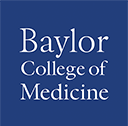Screening for Primary Aldosteronism
Module 2 in our series on "Screening for Primary Aldosteronism in Treatment Resistant Hypertension." Dr. Airy addresses the evolving evidence and concepts surrounding primary aldosteronism and current recommendations for who should be screened and how to screen. She also discusses the quality improvement project to explore developing effective approaches for screening a subset of patients with resistant hypertension.
NEEDS STATEMENT
The purpose of this educational and system intervention is to increase screening rates for primary aldosteronism. Our aim is to increase the screening rate of patients meeting criteria for treatment resistant hypertension who may be at risk for primary aldosteronism. We will start by examining patients who have uncontrolled hypertension on 3 drugs or patients who are hypertensive in the setting of hypokalemia. Our aim is to increase screening for primary aldosteronism by 25% in one year in Baylor Medicine primary care clinics (general medicine and family medicine). We will do this by implementing system changes combined with educational interventions. The educational interventions will employ sequential learning with grand rounds presentations and/or online presentations combined with best practice alerts and access to point-of-care educational resources. The latter will include a screening workflow algorithm developed by the clinical pathway committee from Baylor College of Medicine and Baylor Scott and White; a link to the online module(s) and select resources. To support these interventions, an MA in each of the clinics will work with BCM-IT or BSW-IT to identify at risk patients meeting criteria and schedule them for an appointment with their primary care clinician to explore and implement screening, if agreeable. Finally, we will collaborate with the respective IT groups to deliver feedback to physicians on their screening performance compared to baseline. Thus we will use an approach modified from Green and Kreuter’s Precede/Proceed model (1999) employing predisposing methods (grand rounds/online modules), enabling (best practice alerts), and reinforcing (audit and feedback) to advance screening frequency.
LEARNING OBJECTIVES
At the conclusion of this activity, the participant will be able to:
- Review physiologic and pathophysiologic forms of hyperaldosteronism.
- Enumerate those patients who should be considered for screening for primary aldosteronism.
- Describe an algorithm for how patients may be screened for primary aldostronism.
TARGET AUDIENCE
This activity is for primary care clinicians in Family Medicine and Internal Medicine, Nurses, and Advanced Practice Providers including Physician Assistants and Nurse Practitioners.
EDUCATIONAL METHODS
Lecture
ACTIVITY EVALUATION
Evaluation by questionnaire will address program content, presentation, and possible bias.
DRUG/DEVICE STATUS DISCLOSURE
Some drugs/devices identified during this activity may have United States Food and Drug Administration (FDA) clearance for specific purposes only or for use in restricted research settings. The FDA has stated that it is the responsibility of the individual physician to determine the FDA status of each drug or device that he/she wishes to use in clinical practice and to use the products in compliance with applicable law.
Baylor College of Medicine requires that all faculty/presenters disclose an unlabeled use or investigational use of pharmaceutical and medical device products, and provide adequate scientific and clinical justification for such use. Physicians are urged to fully review all the available data on products or procedures before using them to treat patients.
DISCLOSURE POLICY
Baylor College of Medicine (BCM) is accredited by the Accreditation Council for Continuing Medical Education (ACCME) to provide continuing medical education (CME) for physicians. BCM is committed to sponsoring CE activities that are scientifically based, accurate, current, and objectively presented.
In accordance with the ACCME Standards for Commercial Support, BCM has implemented a mechanism requiring everyone in a position to control the content of an educational activity (i.e., directors, planning committee members, faculty) to disclose any relevant financial relationships with commercial interests (drug/device companies) and manage/resolve any conflicts of interest prior to the activity. Individuals must disclose to participants the existence or non-existence of financial relationships at the time of the activity or within 24 months prior.
In addition, BCM has requested activity faculty/presenters to disclose to participants any unlabeled use or investigational use of pharmaceutical/device products; to use scientific or generic names (not trade names) in referring to products; and, if necessary to use a trade name, to use the names of similar products or those within a class. Faculty/presenters have also been requested to adhere to the ACCME’s validation of clinical content statements.
BCM does not view the existence of financial relationships with commercial interests as implying bias or decreasing the value of a presentation. It is up to participants to determine whether the relationships influence the activity faculty with regard to exposition or conclusions. If at any time during this activity you feel that there has been commercial/promotional bias, notify the Activity Director or Activity Coordinator. Please answer the questions about balance and objectivity in the activity evaluation candidly.
All of the relevant financial relationships listed for these individuals have been mitigated.
ACCREDITATION AND CREDIT DESIGNATION
Baylor College of Medicine is accredited by the Accreditation Council for Continuing Medical Education (ACCME) to provide continuing medical education for physicians.
Baylor College of Medicine designates this enduring material activity for a maximum of 0.50 AMA PRA Category 1 Credit(s)™. Physicians should claim only the credit commensurate with the extent of their participation in the activity.
Available Credit
- 0.50 AMA PRA Category 1 Credit™
- 0.50 Participation

 Facebook
Facebook X
X LinkedIn
LinkedIn Forward
Forward